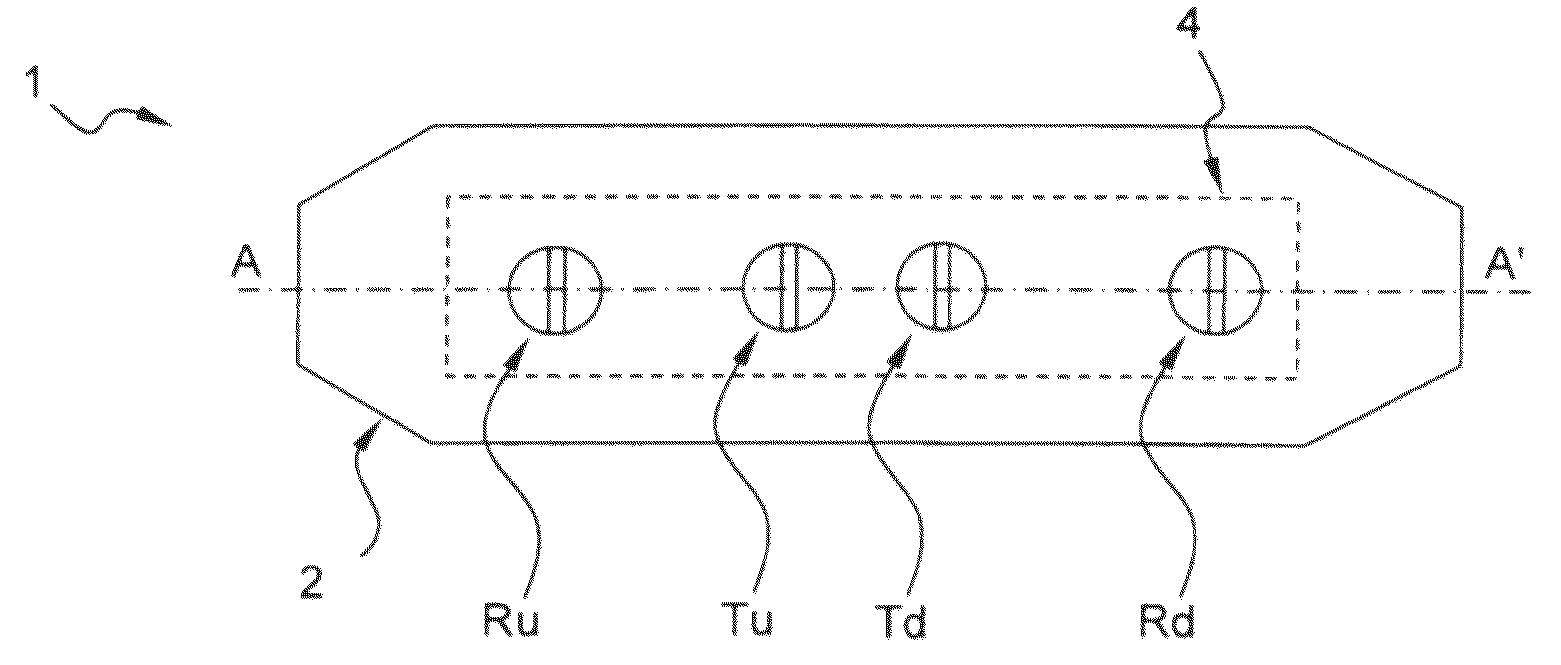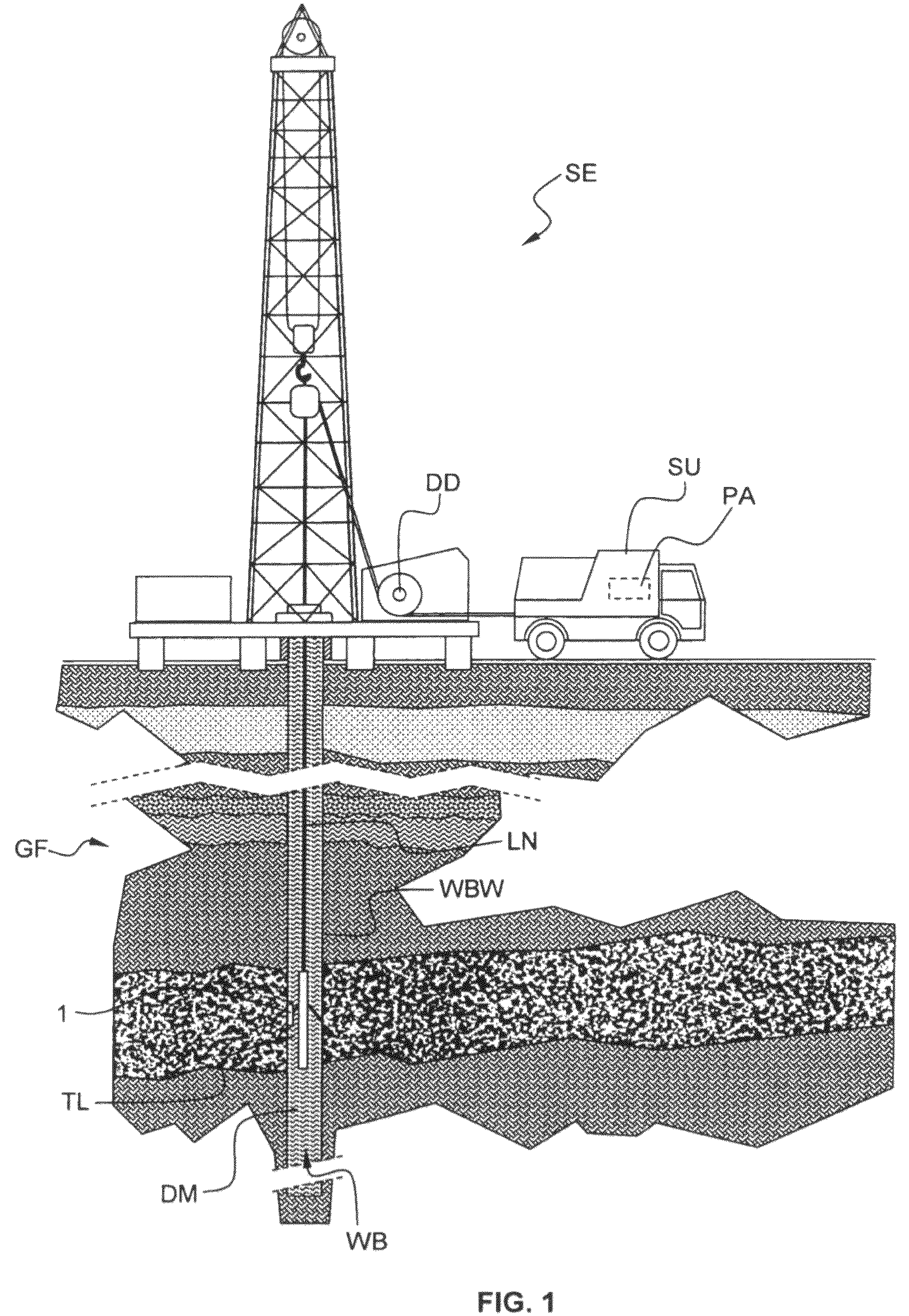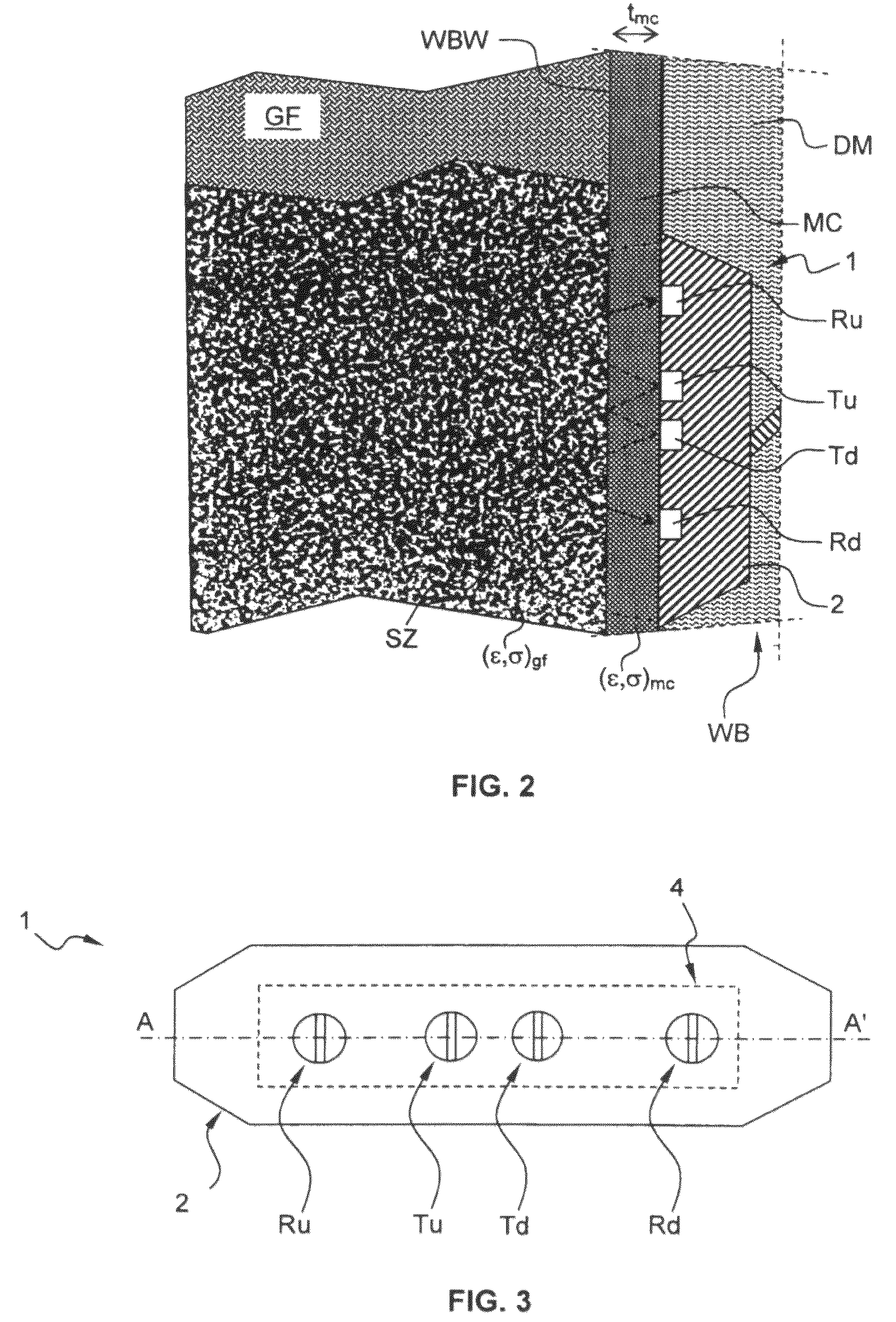Antenna of an electromagnetic probe for investigating geological formations
an electromagnetic probe and geological formation technology, applied in the field of electromagnetic probe antennas, can solve the problems of inability to accurately determine the formation electromagnetic properties, inability to provide accurate measurement of formation properties, and poor depth of investigation for the broadside mode, so as to reduce the drawbacks
- Summary
- Abstract
- Description
- Claims
- Application Information
AI Technical Summary
Benefits of technology
Problems solved by technology
Method used
Image
Examples
first embodiment
[0076]FIGS. 4 and 5 illustrate the antenna 3 according to a The first 34A and second 34B ports pass through the conductive base 31 by means of first 35A and second 35B openings. The openings 35A, 35B are positioned into the bottom 33C of the cavity straight underneath the antenna element ends. The first 34A and second 34B ports extend into the cavity 33. Advantageously, the ports 34A, 34B are insulated relatively to the conductive base at least when passing through the openings. As an alternative, the openings 35A, 35B are filled with an insulating material in order to insulate the connection wires of the ports relatively to the conductive base and maintain the positioning of the antenna element 32 into the cavity 33.
second embodiment
[0077]FIG. 6 illustrates the antenna 3 according to a The first 34A and second 34B ports pass through the conductive base 31 by means of first 36A and second 36B inversed L-shaped tunnels. The tunnels extend from the bottom of the conductive base 31 and emerge into the cavity 33 by the lateral walls 33A, 33B close to the top of the cavity. The antenna element 32 extends all along the cavity aperture. As illustrated in FIG. 6, the antenna element 32 may also extends into a portion of the first 36A and second 36B tunnels. The first 34A and second 34B ports extend into the first 36A and second 36B tunnels. Advantageously, the ports 34A, 34B are insulated relatively to the conductive base 31 all along the tunnels 35A, 35B. Further, the ends of the antenna element 32 when extending into the portion of the first 35A and second 35B tunnels are also insulated relatively to the conductive base 31.
[0078]FIG. 7 illustrates the antenna 3 according to a third embodiment. The third embodiment di...
PUM
 Login to View More
Login to View More Abstract
Description
Claims
Application Information
 Login to View More
Login to View More - R&D
- Intellectual Property
- Life Sciences
- Materials
- Tech Scout
- Unparalleled Data Quality
- Higher Quality Content
- 60% Fewer Hallucinations
Browse by: Latest US Patents, China's latest patents, Technical Efficacy Thesaurus, Application Domain, Technology Topic, Popular Technical Reports.
© 2025 PatSnap. All rights reserved.Legal|Privacy policy|Modern Slavery Act Transparency Statement|Sitemap|About US| Contact US: help@patsnap.com



